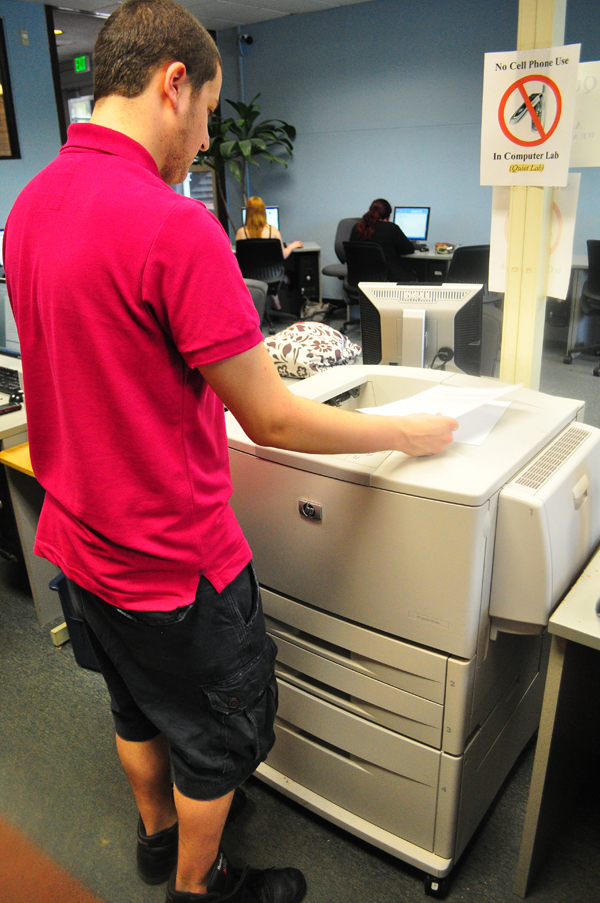

Computers across campus have once again begun requiring students and faculty to adhere to a print quota system.
According to Director of Academic Computer Services Ian Erne, the new Papercut print service platform installed in early April will be fully active by the upcoming fall semester and is currently in a preliminary phase.
When the previous print quota service Pcounter crashed and was no longer compatible with newer Win7 workstations, Erne said there was a period when no quota system was active. But without a system in place, data revealed the student body was printing at a rate of approximately 33 percent above the trend line. For every $100 spent on printer consumables in the preceding year, the college was now spending $133.
“This is clearly not sustainable for a college caught in a fiscal vise,” Erne said. “This forced us to roll out a new print service and quota system which you are now, for better or worse, experiencing.”
Despite Pcounter being a more familiar program, Erne said he hopes the campus community can get past the different interface of Papercut and enjoy some of its newer features, like the included environmental impact widget.
According to Recycling Coordinator and Recycling Club President Lauren Brois, bringing back the print quota may ultimately lead to a more sustainable future for the campus.
Brois said she hopes the quota system will cause students and faculty to look for ways to print more responsibly.
“If they have a class that requires them to print a lot, not only will they think of ways to lessen their printing but it can also encourage the professor to create a new format of assigning work,” she said. “There are other options than printing 50 page articles, like e-readers, books [from the library] and more.”
Erne said bringing back the print quota will save the college money and condition people to become aware of how printing in bulk affects the environment.
As a long time environmentalist, he said he has received positive feedback since installing Papercut.
“I’d say 80 percent of the feedback concerned workflow and pricing,” Erne said. “The remaining 20 percent were mostly an environmental that-a-boy.”
For graduate student Lorin Montgomery, the return of the print quota has created some difficulties.
She said she takes four writing intensive courses that require a lot of paper.
“I can’t take out all the books I have to read so I have to print a lot of stuff,” she said. “For my philosophy class alone, a lot of that stuff is 35 or 40 pages long.”
According to Erne, no decision has been made as to whether students and faculty will have to pay-to-print beyond their start-up quota if they were to go over. However, there will be a 50 percent discount for double-sided printing.
Erne said the choice to charge will involve the administration and various campus governance organizations and will most likely be made before the fall.
